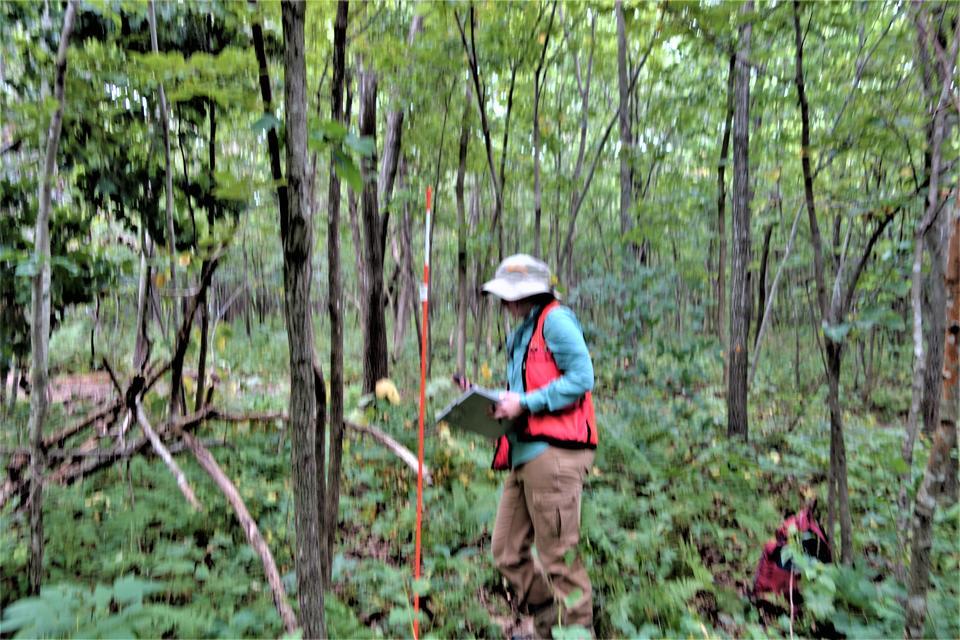Overview
This case study documents current stand conditions 29 years after initiation of a unique silvicultural prescription with a main objective of establishing natural oak regeneration.
Three notable features of this prescription and study are that:
- It was a field trial of mechanical site preparation done prior to initial harvest, with objectives of controlling understory competition and preparing the soil for acorn germination.
- It incorporated a shelterwood harvest, which was somewhat unusual at the time.
- It is yet another example of fairly good oak regeneration establishment, but poor recruitment on a dry-mesic site.
Silviculture Objectives
- Regenerate a mature oak stand to a young stand with similar composition.
- Assess the effectiveness of a unique silvicultural prescription.
- Maintain and enhance wildlife habitat by increasing the amount oak trees in the new stand.
- Improve timber quality and value.
Pre-treatment stand description and condition
Stand establishment and management history
The pre-treatment stand was dominated by red and white oak, with small volumes of elm, hickory, basswood and several other minor species (Table 1).
The 1991 timber sale appraisal notes indicate that the site had a partial harvest (probably a “high-grade” of oaks) around 40 years prior. This was probably in the early 1950s, based on this note and also on stump condition in 2020.
The oaks probably averaged 100 to 120 years old at harvest. Most of the mature oak stands in southeastern Minnesota of that vintage originated after control of regular fires and post European settlement. The stand would have been part of a privately owned farmstead until the state obtained it, so it probably had a history of use as a woodlot and wooded pasture prior to state ownership.
Pre-treatment species composition
Table 1: 1991 Timber Sale Appraisal Species and Volume Estimates
Species | Quantity (MBF) |
Red Oak | 45.5 |
White Oak | 14.6 |
American Elm | 1.6 |
Hickory | 1.9 |
Basswood | 1.7 |
Butternut | .2 |
Black Cherry | .2 |
Hackberry | .1 |
Total | 65.8 |
Pre-treatment forest health issues
None noted. As is common for stands of its age in southeastern Minnesota, the stand probably had a modest amount of heart rot.
Landowner objectives/situation
While specific objectives vary from parcel to parcel, lands under the administration of DNR-Forestry are managed in alignment with Section Forest Resource Management Plans (SFRMP) to ensure that state forest management activities meet statewide goals for ecological protection, timber production, wildlife habitat and cultural/recreational values. The DNR assembles teams from the Divisions of Forestry, Fish & Wildlife, and Ecological & Water Resources who work with partners and the public to develop SFRMPs.
The Minnesota DNR goal for oak forest acreage at the time of project initiation was to maintain as much of it as possible through regeneration of mature stands.
Silviculture prescription
The following series of treatments were implemented:
Treatment | Date | Description | Acres Treated |
Timber Appraisal and Silvicultural Assessment | Fall 1991 | Timber was appraised for sale, and the stand was assessed to determine a silvicultural strategy. This included a survey of advance regeneration. | 26 |
Mechanical site preparation | Fall 1991 | Mechanical site preparation consisting of a small bulldozer traveling across the site multiple times with its blade just above ground level, with 3 objectives of:
*Treatment was limited to the flattest portion of the site, but no exact acreage is noted in records. | 10 (estimated)*
|
Initial Shelterwood Harvest | Winter of 1991/92 | First harvest of 2-stage shelterwood/seed tree prescription. Although not noted on the appraisal, basal area was probably reduced to around 40 to 80 ft2/acre, with mostly red, white & bur oak reserved as shelterwood/seed trees and for habitat. | 10 Note: The appraisal was on 26 acres, but Forester Jim Edgar said that only 10 acres actually got harvested. He was not sure why. |
Post-sale killing of elm, ironwood and boxelder | Summer 1992 | Competing boxelder, elm, ironwood, maple and hickory trees were killed by girdling with a chainsaw, and applying Tordon herbicide to the girdle wound. This was only done on the steepest portion of the site (around the edges) where the bulldozer could not operate. | 2 (estimated) |
Final Shelterwood Harvest | Winter 1996/97 | Final harvest of 2-stage shelterwood/seed tree prescription. | 10 |
Crop tree release | Summer 2012 | Competing boxelder, elm, ironwood, and hickory trees were killed by girdling with a chainsaw, and applying Tordon herbicide to the girdle wound. | 11 |
What actually happened during the treatment
The timber appraisal for the initial timber harvest in the winter of 1991/92 was for 26 acres, but Forester Jim Edgar thinks that only the 10 acres of the study area actually got harvested at that time. This same 10 acres is where the second and final harvest took place in 1996/97.
A note on the June 1992 regeneration check summary indicates that the mechanical site preparation work was very effective at controlling competition.
Post-treatment assessment
We established a fair amount of red oak but did not recruit as much oak regeneration as we had hoped for. Additional intermediate treatments would have been needed for more oaks to recruit to larger size classes.
Measurements in 2020 indicated a diverse hardwood stand 28 years after the initial harvest and regeneration work. As shown in Table 2, basswood, butternut, elm, red oak and hickory have the greatest basal area and frequency. A variety of other species are also scattered throughout the stand in smaller amounts, including hackberry, boxelder, ironwood and several others. The modest amount of post-harvest-regenerated oak is in spite of fair numbers of oak seedlings being present shortly after the initial treatment (see Table 3). This is a clear indication that additional competition release 2-10 years after the second-stage harvest in 1996/97 would have been necessary for more oaks to recruit to larger size classes.
Red oak trees are a combination of those reserved during the 2 harvests, and those regenerated post-harvest. Given average oak growth rates, those larger than about 7 inches DBH in 2020 are reserve trees from the 2 harvests. Oaks less than 7 inches DBH are almost all trees that regenerated post-harvest.
NOTE: The DBH classes we used for data collection are helpful, but not perfect for distinguishing post-harvest regeneration from harvest residuals. This is because the 5”-10” DBH class likely contains largely post-harvest regeneration, but may also contain some harvest residuals (Table 2).
Table 2: Tree species density by DBH class, and frequency on plots in 2020. Species in alphabetical order; oak species in size classes that have mostly regenerated post-harvest have bold font.
Diameter Class | 3-5” DBH | 5-10” DBH | 10-15” DBH | 15-20” DBH | >20” DBH | |||||
Species | Stems/ Acre | Freq | BA (ft2/Ac) | Freq | BA (ft2/Ac) | Freq | BA (ft2/Ac) | Freq | BA (ft2/Ac) | Freq |
Basswood | 100 | 10% | 6.9 | 50% | 1.9 | 30% | 0.6 | 10% | 0 | 0%^ |
Bitternut Hickory | 0 | 0% | 1.9 | 30% | 0.6 | 10% | 0 | 0% | 0 | 0% |
Black Cherry | 80 | 70% | 9.4 | 60% | 0.6 | 10% | 0 | 0% | 0 | 0% |
Boxelder | 0 | 0% | 2.5 | 20% | 0 | 0% | 0 | 0% | 0 | 0% |
Butternut | 0 | 0% | 4.4 | 50% | 4.4 | 60% | 0 | 0% | 0 | 0% |
Cottonwood | 0 | 0% | 0 | 0% | 0 | 0% | 0.6 | 10% | 0 | 0% |
Elm | 60 | 30% | 6.3 | 70% | 0.6 | 10% | 1.3 | 20% | 0 | 0% |
Hackberry | 30 | 10% | 0.6 | 10% | 0 | 0% | 0 | 0% | 0 | 0% |
Ironwood | 350 | 30% | 0.6 | 10% | 0 | 0% | 0 | 0% | 0 | 0% |
Paper Birch | 0 | 0% | 0.6 | 10% | 0 | 0% | 0 | 0% | 0 | 0% |
Red Oak | 40 | 30% | 0.6 | 10% | 1.3 | 20% | 3.8 | 30% | 0.6 | 10% |
Shagbark Hickory | 20 | 20% | 0 | 0% | 0.6 | 10% | 0.6 | 10% | 0 | 0% |
Sugar Maple | 0 | 0% | 0 | 0% | 0.6 | 10% | 0 | 0% | 0 | 0% |
Total BA |
| 52 Ft2/ac. | ||||||||
In 2020, there are some oaks that regenerated post-harvest, but not nearly as many as we would have liked.
Table 3: June 1992 regeneration check summary - trees/acre and plot frequency by species for regeneration less than 1 foot in height. Species are in alphabetical order.
Species | Stems/ Acre | Freq |
Ash | 10 | 10% |
Basswood | 175 | 40% |
Elm | 110 | 30% |
Hickory | 80 | 30% |
Red Oak | 410 | 70% |
Total Stems/Acre | 785 |
|
Frequency data in Table 2 shows that only about 30% of the site contains oak regenerated post-harvest. Total stem counts in the 3-5 inch DBH class are well below minimum stocking standards (Sanders, 1977), and there is only a small presence of oaks in the 5 to 10” DBH size class. Figure 1 and Figure 2 show that all oak species regeneration abundance is underrepresented.
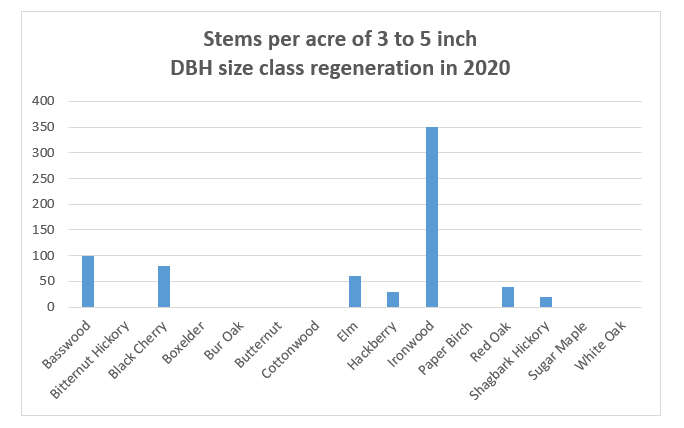
Figure 1: Stems/acre of 3 to 5 inch DBH size class regeneration in 2020
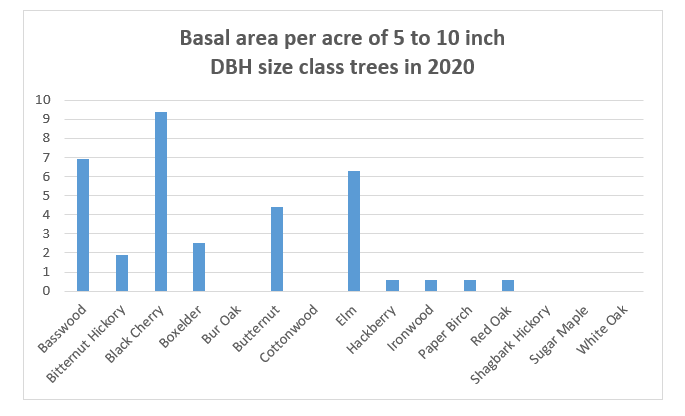
Figure 2: Basal area/acre of 5 to 10 inch DBH size class regeneration in 2020
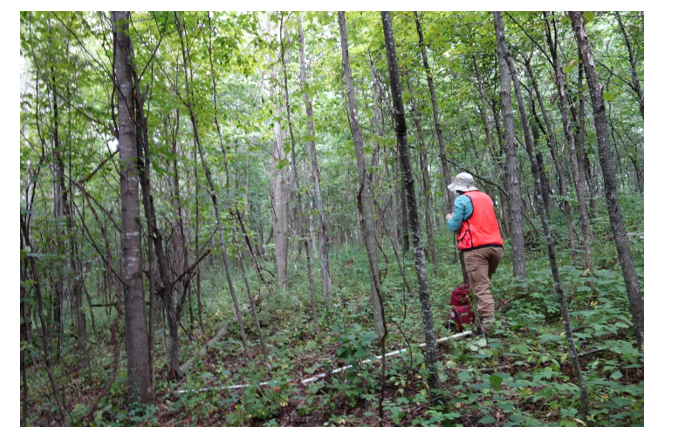
Figure 3: Abundant regeneration but few oaks on much of the study area.
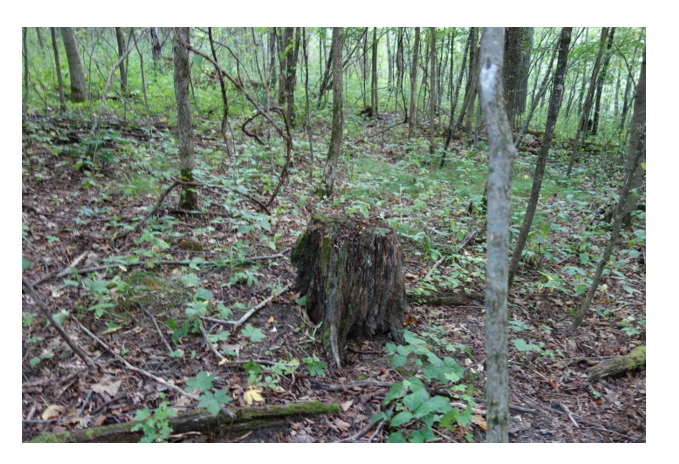
Figure 4: An approximately 28 year old harvest stump surrounded by regeneration
The stand has a notable component of butternut
There is a notable presence of butternut in the stand. It will be interesting to see if any butternuts survive over the next 20 years, or if they all die and are replaced by other species.
A significant number of competing elm stems that were probably girdled and chemically treated in the 2012 crop tree release survived
See Table 2. It is not clear from our observations why these stems survived, but we have seen the same phenomenon on several other case study sites. Follow-up discussions with Forestry staff will take place to determine if changes to crop tree release treatment specifications might be needed. These stems continue to compete with oak, cherry and other crop trees.
Understory regeneration less than 3 inches DBH in size
Impact on the future management of the stand of most regeneration less than 3 inches DBH is likely to be negligible, but we include this data here because it may be of some interest to managers moving forward.
One notable takeaway from Table 4 below that may have the greatest impact on future stand management is the relatively modest presence of sugar maple. Future maple competition with crop trees will be negligible.
Table 4: Understory regeneration summary: Trees/acre and plot frequency by species and size class in 2020.
Size Class | < 1’ tall | ≥1’ tall and < 1” DBH | 1” to 3” DBH | |||
Species | Stems/ Acre | Freq | Stems/ Acre | Freq | Stems/ Acre | Freq |
Basswood | 200 | 20% | 100 | 10% | 0 | 0% |
Bitternut Hickory | 700 | 50% | 100 | 10% | 0 | 0% |
Black Cherry | 100 | 10% | 100 | 10% | 0 | 0% |
Boxelder | 0 | 0% | 400 | 30% | 50 | 10% |
Bur Oak | 800 | 10% | 0 | 0% | 0 | 0% |
Butternut | 0 | 0% | 0 | 0% | 0 | 0% |
Cottonwood | 0 | 0% | 0 | 0% | 0 | 0% |
Elm | 2600 | 70% | 300 | 20% | 50 | 10% |
Hackberry | 200 | 20% | 600 | 50% | 50 | 10% |
Ironwood | 0 | 0% | 100 | 10% | 50 | 10% |
Paper Birch | 0 | 0% | 0 | 0% | 0 | 0% |
Red Oak | 200 | 20% | 0 | 0% | 50 | 10% |
Shagbark Hickory | 500 | 30% | 0 | 0% | 0 | 0% |
Sugar Maple | 200 | 10% | 200 | 10% | 0 | 0% |
White Oak | 100 | 10% | 0 | 0% | 50 | 10% |
Total | 5600 |
| 1900 |
| 300 |
|
Herbaceous vegetation
In terms of non-tree vegetation, we found typical plants found in MHs37 native plant communities including herbaceous plants like white snakeroot (Ageratina altissima), pointed leaved tick trefoil (Desmodium glutinosum), lady fern (Athyrium Filix-femina), interrupted fern (Osmunda claytoniana), maidenhair fern (Adiantum pedatum), wild ginger (Asarum canadense),wild geranium (Geranium maculatum), jack-in-the-pulpit (Arisaema triphyllum) and richer species like maidenhair fern (Adiantum pedatum), two-leaved miterwort (Mitella diphylla), blue cohosh (Caulophyllum thalictroides) and virginia waterleaf (Hydrophyllum virginianum); shrubs like nannyberry (Viburnum lentago), grey dogwood (Cornus racemosa), pagoda dogwood (Cornus alternifolia), blue-beech (Carpinus caroliniana), downy arrowwood (Viburnum rafinesquianum), chokecherry (Prunus virginiana), prickly-ash (Zanthoxylum americanum), gooseberries (Ribes spp.) were common. There were some earlier successional species present in patches still including raspberries and blackberries (Rubus spp.) and stickseed (Hackelia virginiana).
Invasive species
We observed a few exotic plants, including buckthorn (Rhamnus cathartica), honeysuckle (exotic Lonicera spp.), and white mulberry (Morus alba). These shrubs were scattered, but not common in the stand. However, they are something to be aware of and consider in future management.
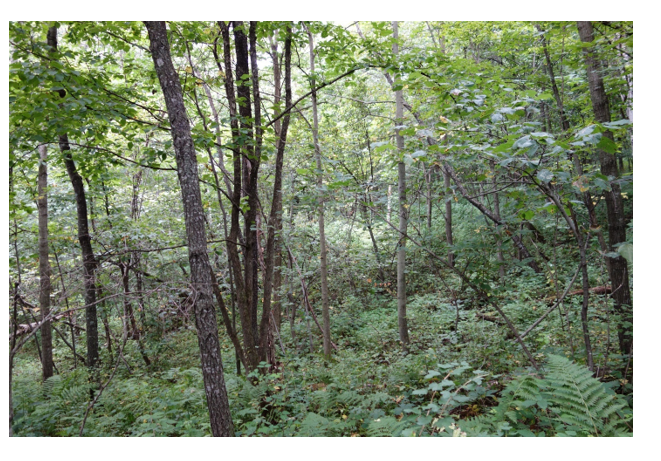
Figure 5: Another typical portion of the stand with mixed hardwood regeneration but few oaks.
Plans for Future Treatments
Monitor the stand through periodic inventory surveys.
Crop tree release: As of December 2022, a crop tree release is planned for this site when funding becomes available. Language from the crop tree release project proposal follows:
Release all desirable trees on three sides in order of preference: oak, walnut, cherry, maple, hickory, basswood. Do not cut any butternut. Where multiple desirable stems are growing together, select the best formed and release on 2 sides. Cut and stump treat all boxelder. Large diameter undesirable trees should be girdled and treated. Basal bark or cut and stump treat all buckthorn, Japanese barberry and invasive honeysuckle over 2 feet tall.
Costs and economic considerations
Costs
1991 timber sale appraisal and administration: $ 75/ac
Mechanical site preparation with bulldozer 1991: $100/ac (1991 dollars)
Post-sale killing of competing trees on 3 ac.1992: $ 23/ac (1992 dollars)
1996/97 timber sale appraisal and administration: $100/ac (1997 dollars)
Release - killing of competing trees on 12 ac.: $ 90/ac (2012 dollars)
TOTAL $ 388/ac
Revenue
Timber revenue in 1991/92: $ 494/ac (1991 dollars)
Timber revenue in 1996/97: $ 420/ac (1996 dollars)
Total: $ 914/ac (1991 & 1996 dollars)
Other notes
We gratefully acknowledge the review and editing assistance of MNDNR Silviculture Program Coordinator Mike Reinikainen.
Summary
A healthy, diverse hardwood stand was established 28 years after initiating a two-step shelterwood with mechanical site prep.
Basswood, butternut, elm, red oak and hickory have the greatest basal area and frequency. A variety of other species are also scattered throughout the stand in smaller amounts, including hackberry, boxelder, ironwood and several others.
However, we did not recruit as much oak regeneration as we had hoped for. Following initial red oak establishment, additional intermediate treatments would have been needed for more oaks to recruit to larger size classes.
In 2020, there are some oaks that regenerated post-harvest, but not nearly as many as we would have liked.
In spite of fair numbers of oak seedlings being present shortly after the initial treatment, the amount of post-treatment-regenerated oak now is modest. Clearly, additional competition release during years 2-10 after the second-stage harvest in 1996/97 would have been necessary for more oaks to recruit to larger size classes.
A significant number of competing elm stems that were girdled and chemically treated in the 2012 crop tree release survived
It is not clear from our observations why these stems survived, but we have seen the same phenomenon on several other case study sites. Follow-up discussions with Forestry staff will take place to determine if changes to crop tree release treatment specifications might be needed. These stems continue to compete with oak, cherry and other crop trees.
Supplemental content
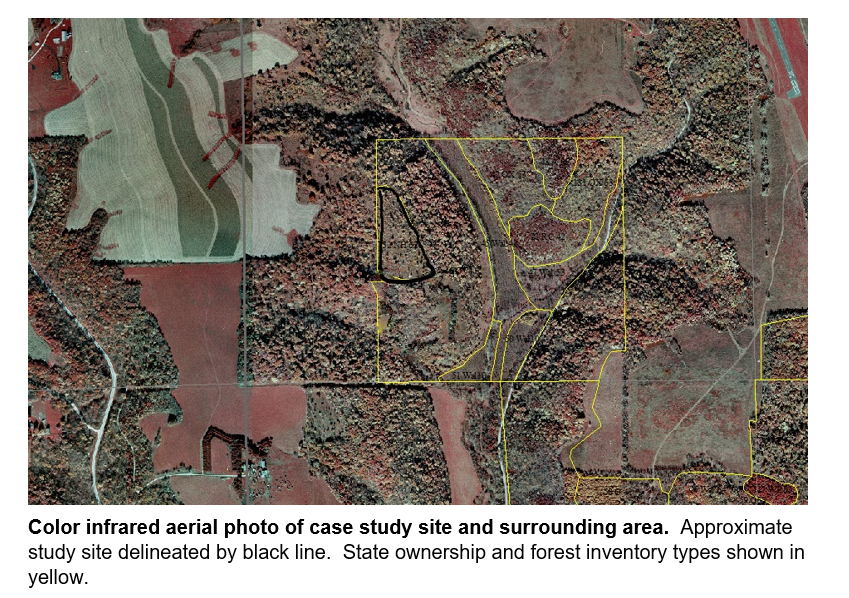
Supplemental figure 1: Color infrared aerial photo of case study site and surrounding area. Approximate study site delineated by black line. State ownership and forest inventory types shown in yellow.
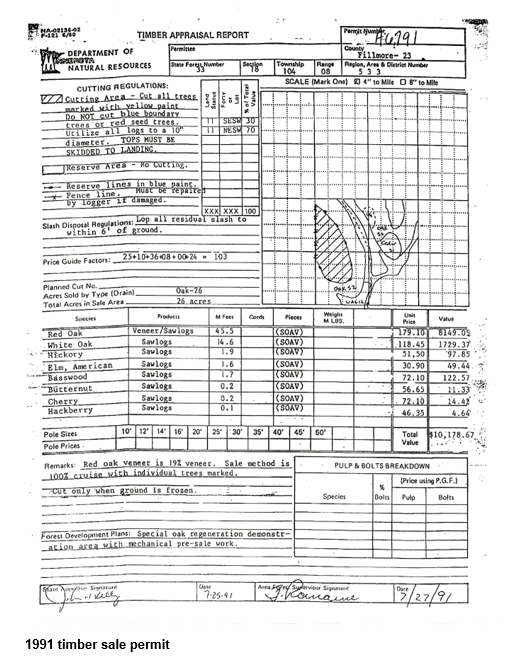
Supplemental figure 2: 1991 timber sale permit
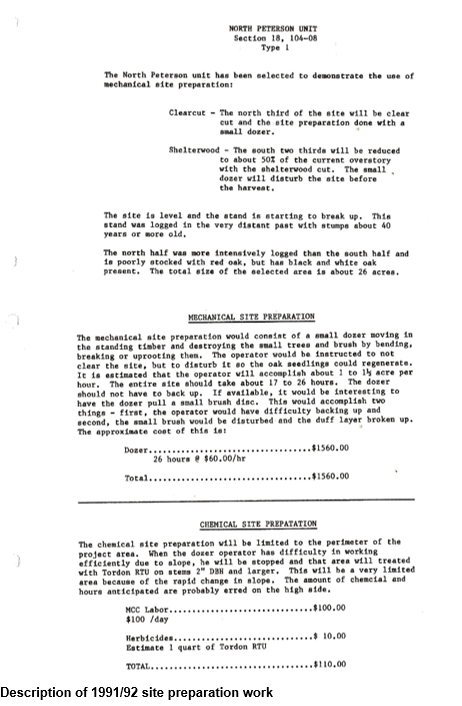
Supplemental figure 3: Description of 1991/92 site preparation work
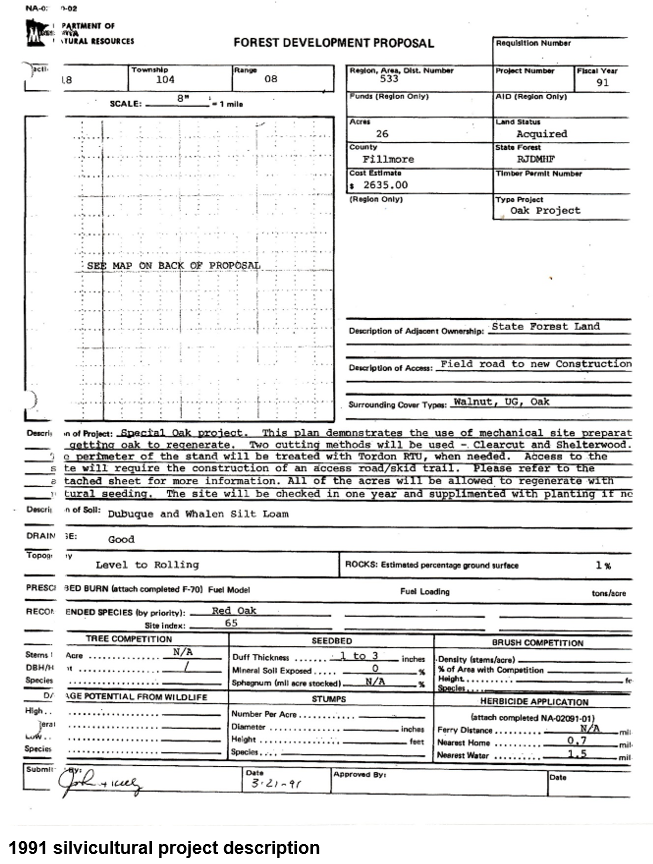
Supplemental figure 4: 1991 silvicultural project description
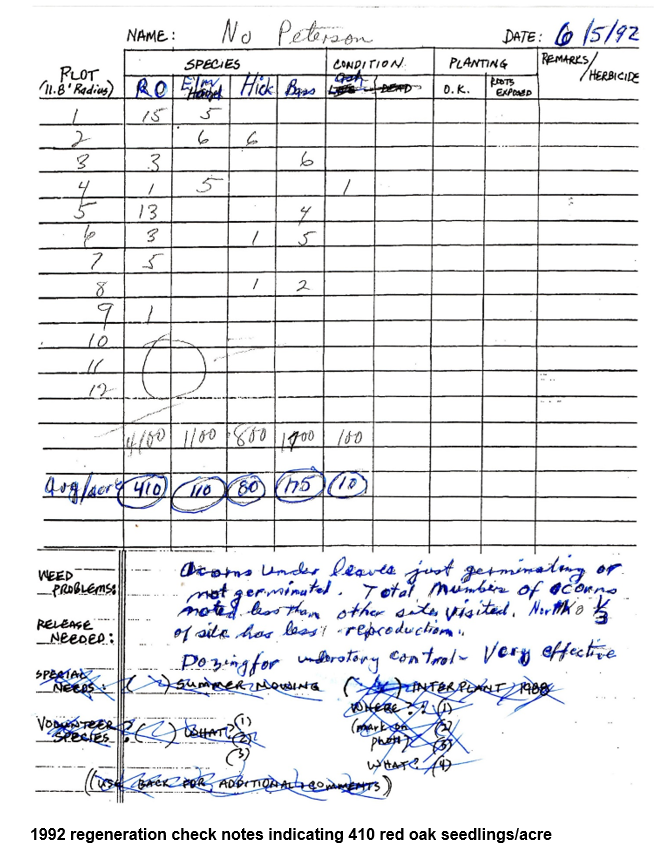
Supplemental figure 5: 1992 regeneration check notes indicating 410 red oak seedlings/acre
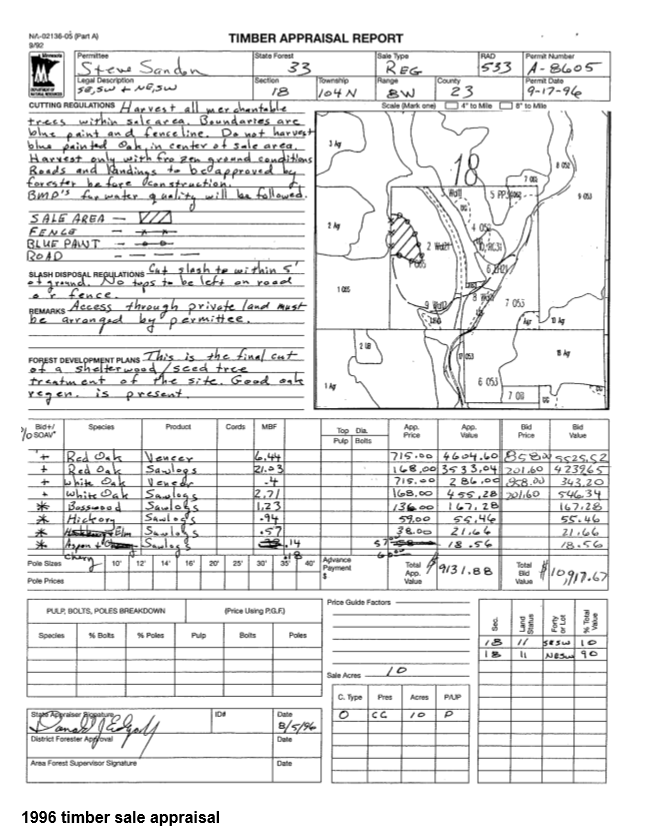
Supplemental figure 6: 1996 timber sale appraisal
